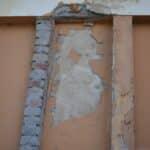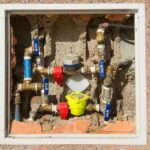That Squeak Under Your Feet Could Be a Serious Warning Sign
Those creaky boards you have been ignoring might be telling you it’s time for a sub floor replacement. The subfloor is the unsung hero of your home—usually a layer of plywood or OSB that gives every finished floor its strength. When it fails, the whole structure is at risk.
When Do You Need Sub Floor Replacement?
- Squeaking or popping sounds when you walk
- Sagging or bouncy floors that feel unstable
- Soft, spongy spots that compress underfoot
- Musty odors rising from below
- Visible water damage or spots of mold
- A loose toilet that rocks when you sit down
- Cracked tiles or gaps opening in hardwood
In Maryland’s older homes—from classic Baltimore rowhomes to mid-century ranchers—humidity, seasonal thaws, and the occasional plumbing leak can wreak havoc on this critical layer. A subfloor issue often starts deeper in the crawl space or basement. Poor drainage or foundation concerns create the perfect storm for wood rot.
As a family-run company with more than 70 years of local experience, we have seen it all. A squeak today can signal a structural problem tomorrow, so we tackle the root cause—not just the symptom—for lasting peace of mind.
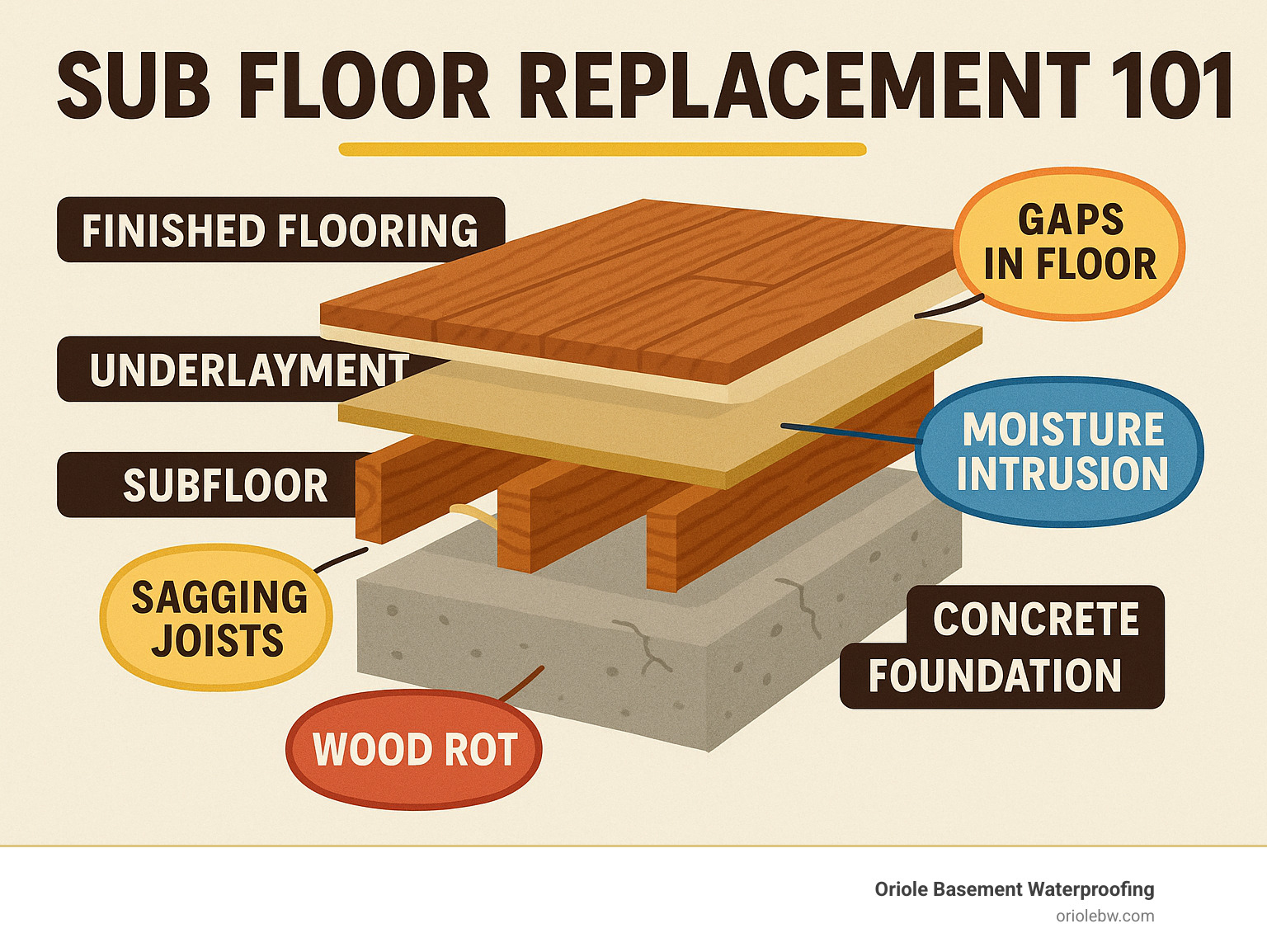
The Critical Need for Professional Sub Floor Replacement
When you hear that telltale creak or feel a bouncy spot, your home is giving you an early warning. Sub floor replacement isn’t just about silencing annoying noises; it’s about protecting the structural backbone that keeps your family safe. With more than 70 years of experience helping Maryland homeowners, we know that quick action can save thousands.
Telltale Signs You Have a Subfloor Problem
After inspecting hundreds of homes across Baltimore County, Cecil County, and up through York County, we have learned to speak a house’s language.
- Squeaking or popping noises: Widespread or worsening squeaks point to loose or deteriorating subfloor panels.
- Sagging or uneven floors: If a marble rolls to one corner, the joists or the subfloor have likely weakened.
- Soft or spongy spots: Common near bathrooms or kitchens where moisture lingers—these need fast attention.
- Musty odors: A damp, earthy smell from below often means mold or mildew is forming.
- A wobbly toilet: Any movement usually signals subfloor rot from water damage.
- Gaps between floorboards or cracked tiles: Finished flooring reflects the instability beneath it.
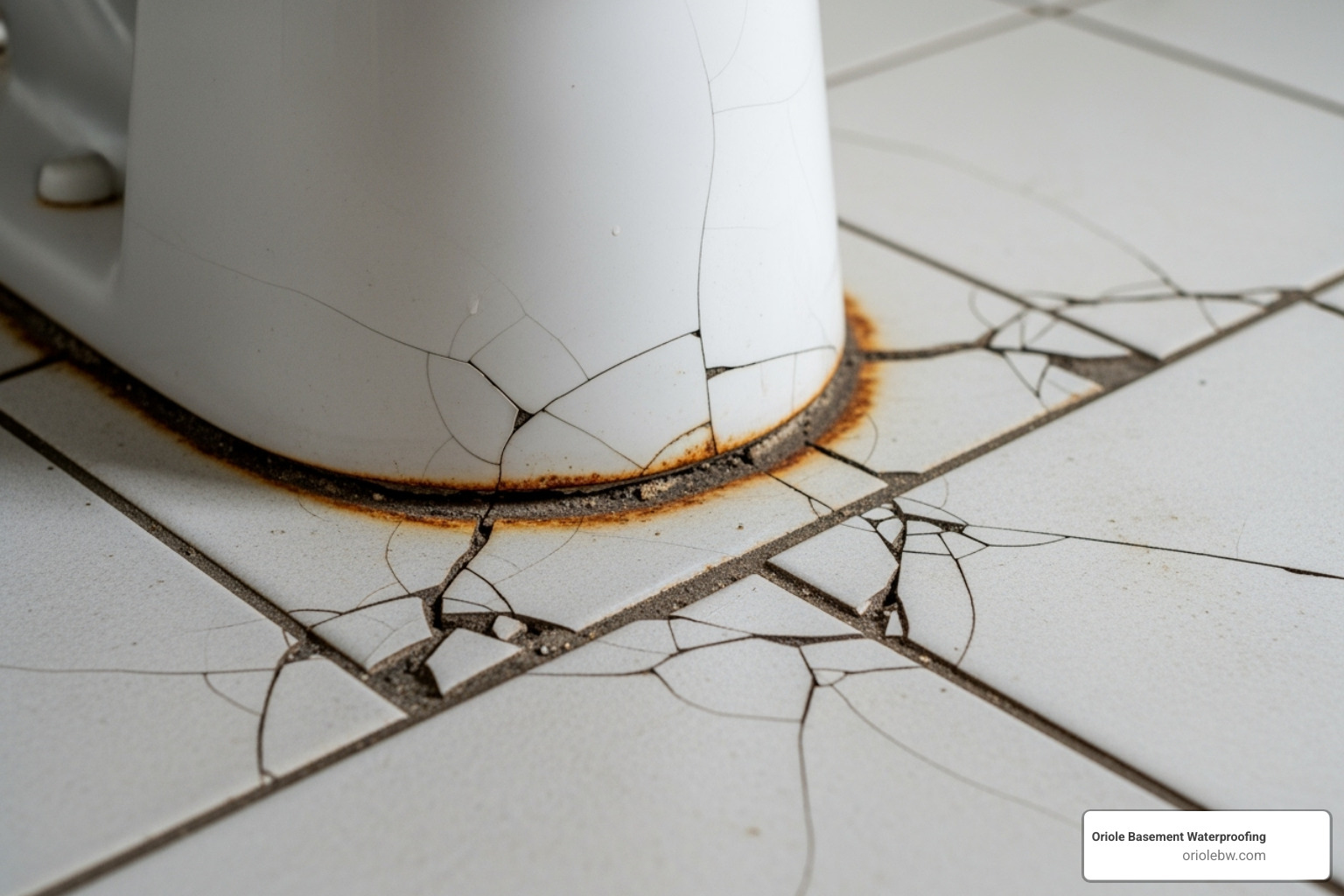
The Real Culprits: Moisture, Pests, and Foundation Issues
A damaged subfloor is usually a symptom, not the disease. The real problems hide underneath.
- Water Damage: The International Association of Certified Home Inspectors confirms moisture is the number-one culprit, and our job sites prove it daily.
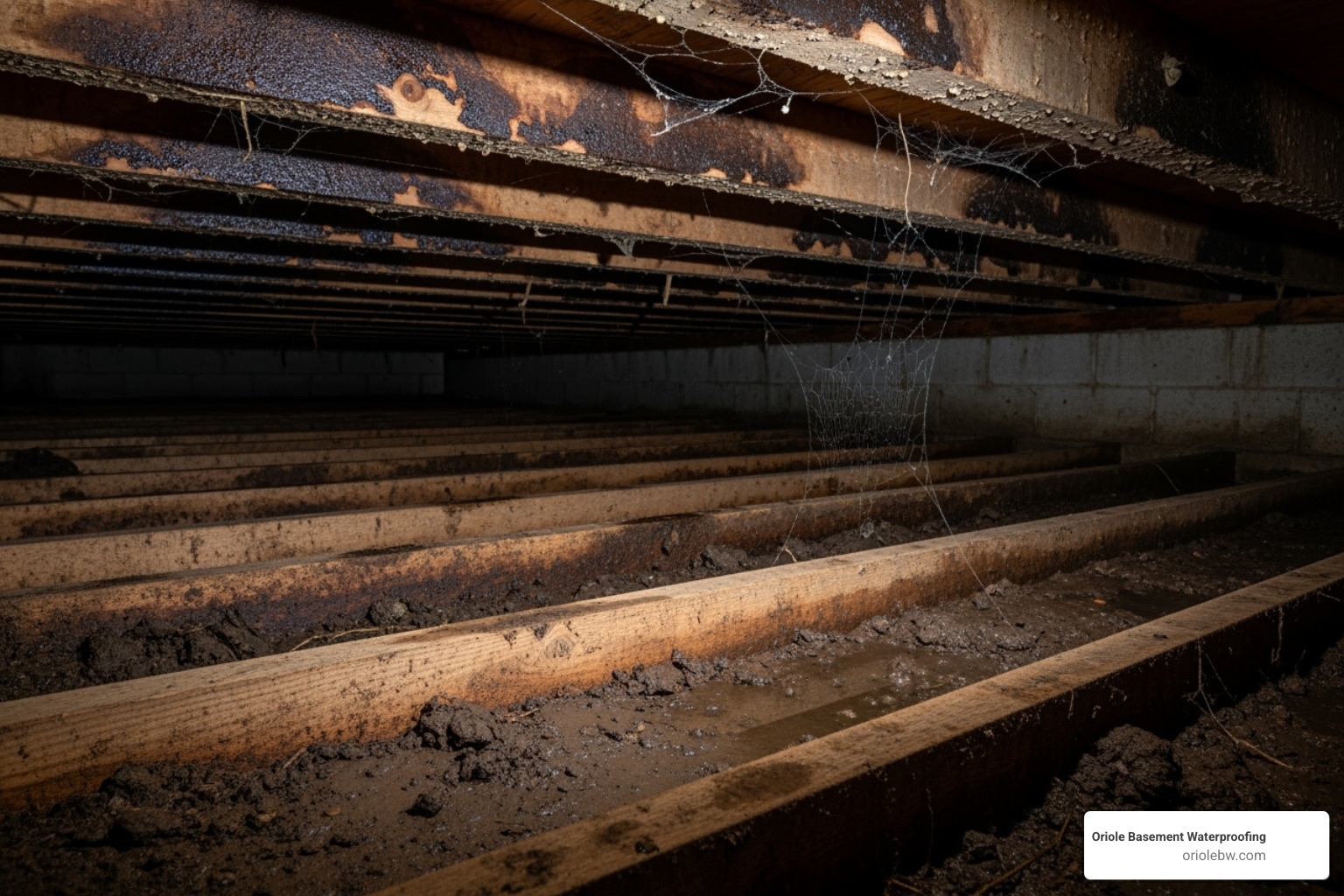
- Crawl Space & Basement Humidity: Dirt crawl spaces in Harford and York Counties trap moisture unless properly encapsulated.
- Foundation Settlement: Shifting foundations twist joists and lead to squeaks and sags upstairs.
- Leaky Pipes & Sill Plate Rot: Even a pinhole leak can soak a subfloor. When the sill plate rots, the entire floor system weakens.
- Termite Damage: These pests hollow out structural wood, requiring both pest treatment and professional repair.
Why a DIY Sub Floor Replacement Is a Recipe for Disaster
We respect a good weekend project, but sub floor replacement is not one of them.
- Structural Risk: A wrong cut can compromise walls or joists.
- Specialized Tools: Heavy-duty saws, moisture meters, and proper fastening techniques are must-haves.
- Hidden Dangers: Electrical, plumbing, and gas lines often run under the subfloor.
- Root Cause Matters: A perfect repair will fail again if the moisture problem remains.
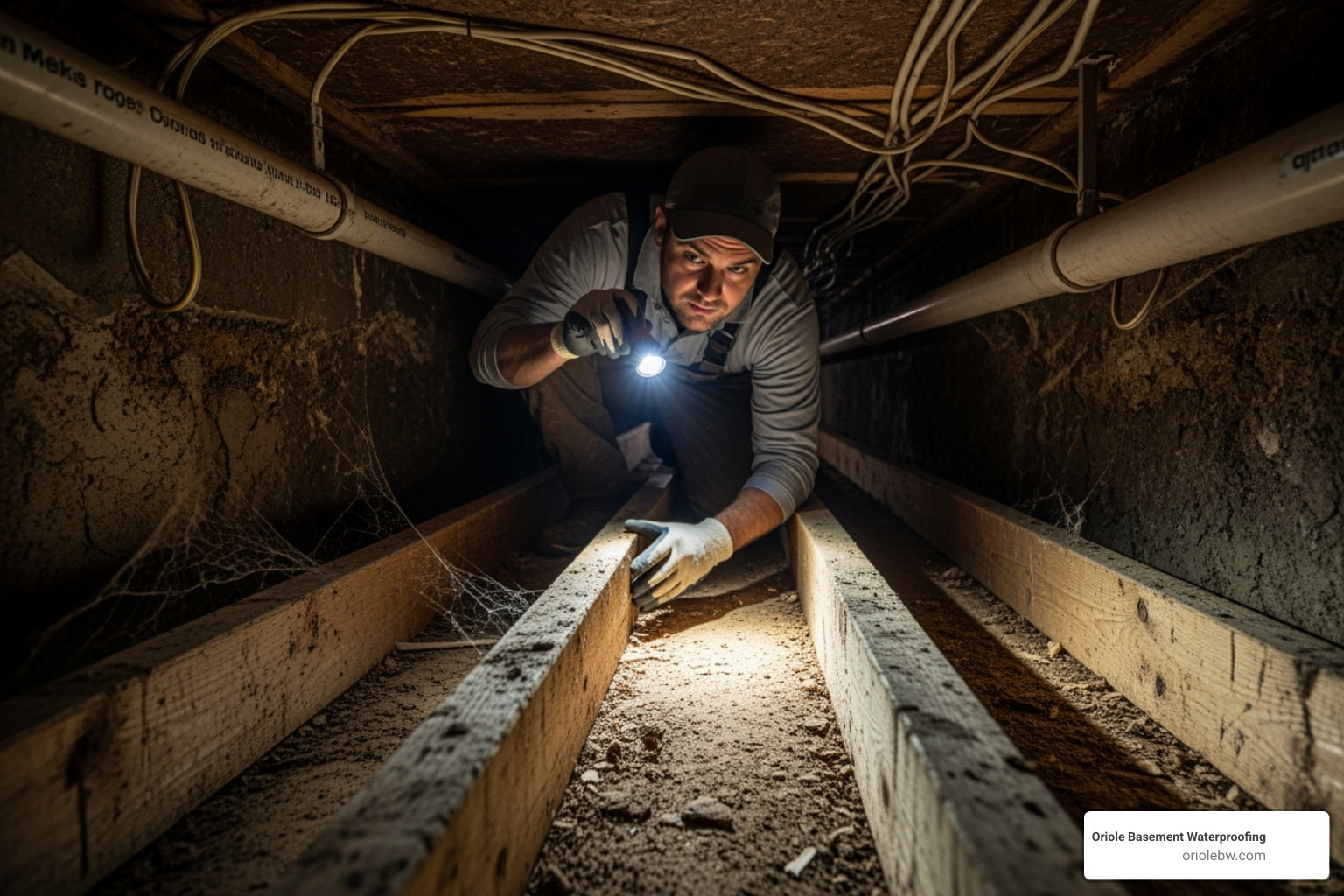
Doing it right the first time saves money and headaches. Anything beyond a tiny, isolated patch deserves professional expertise.
Securing Your Home’s Future: The Right Way to Restore Your Floors
Feeling a soft spot underfoot is unsettling, but subfloor problems are absolutely solvable—when handled the right way.
Partial Repair vs. Full Replacement: An Expert’s View
“Can’t we just patch the bad spot?” We get that question a lot. After seven decades in the field, we know a patch often hides a bigger issue.
| Feature | Partial Repair (Patching) | Full Replacement (Professional) |
|---|---|---|
| Initial Cost | Lower | Higher |
| Long-Term Value | Limited; recurring issues are common | High; lasting stability and peace of mind |
| Addressing Root Cause | Rarely | Always |
| Structural Stability | May leave weak zones | Uniform support across the entire area |
| Time to Complete | Quick for small areas | More involved, but a one-time, comprehensive fix |
| Warranty & Assurance | Typically none | Often backed by lifetime transferable guarantees |
Subfloor damage is like an iceberg—the visible part is tiny compared to what lurks beneath. Baltimore County homeowner patched a soft bathroom spot, only to call us six months later when the problem doubled in size. The underlying moisture had never been addressed.
What to Expect from a Professional Assessment
When you invite Oriole into your home, you get a team that looks at the whole picture.

- We Listen: Your timeline and observations are valuable clues.
- Joist & Foundation Inspection: We crawl underneath to check beams, sill plates, and foundation walls.
- Moisture Readings: Specialized meters reveal hidden trouble.
- A Comprehensive Plan: If crawl space humidity is the root cause, we recommend encapsulation so the fix lasts.
- No-Pressure Answers: You get clear findings and honest options—nothing more, nothing less.
The Lasting Value of a Structurally Sound Home
Investing in proper sub floor replacement protects your family’s safety and your property value. A solid, warrantied subfloor is a major selling point—and it lets every finished floor (hardwood, tile, or carpet) perform as intended.
Ignoring the problem can turn a simple repair into a costly structural overhaul. By removing moisture and replacing damaged wood today, you create a healthier, more stable home for decades.
Ready for peace of mind? Schedule your free, no-obligation inspection and protect your home’s foundation today.


